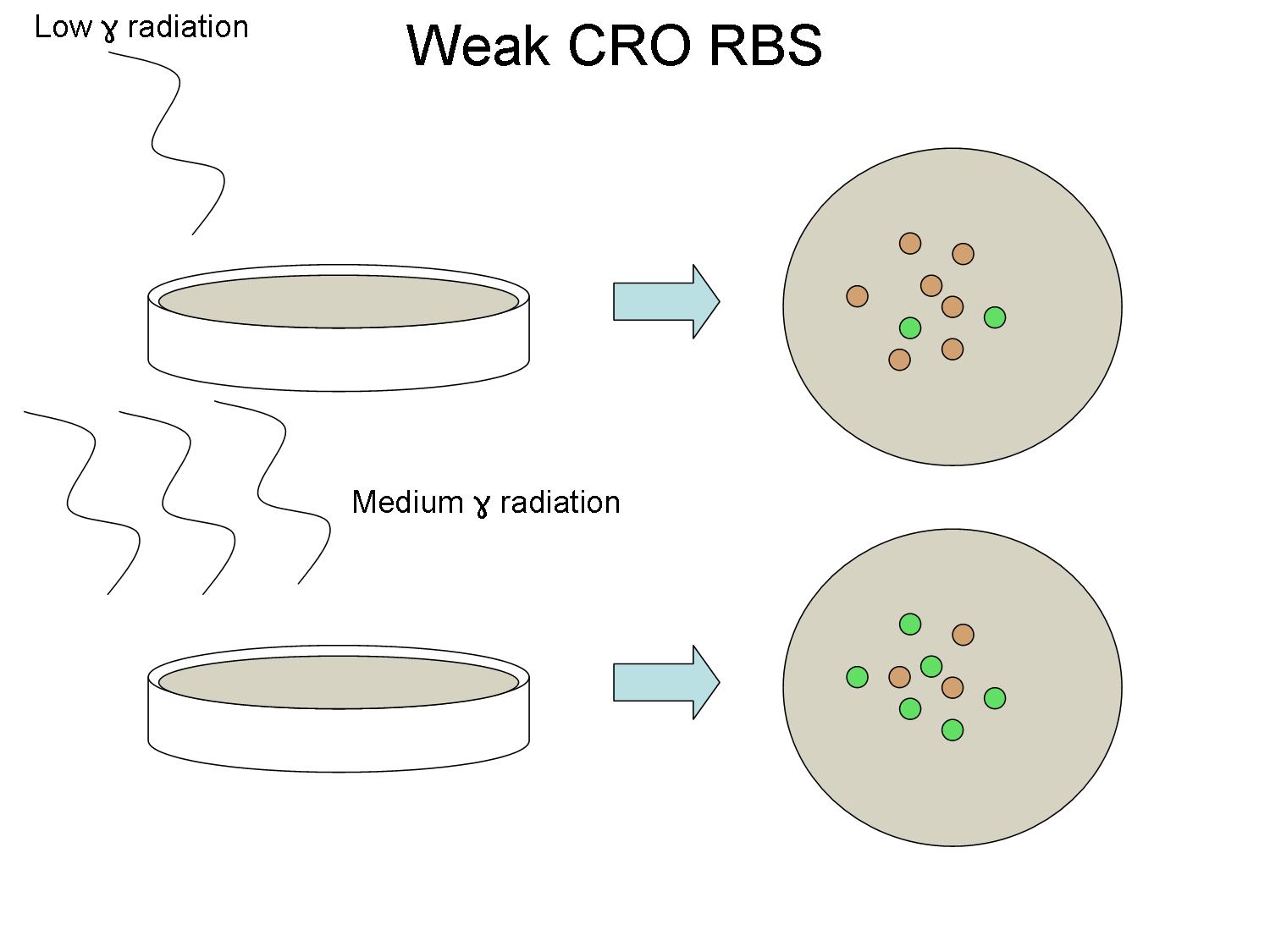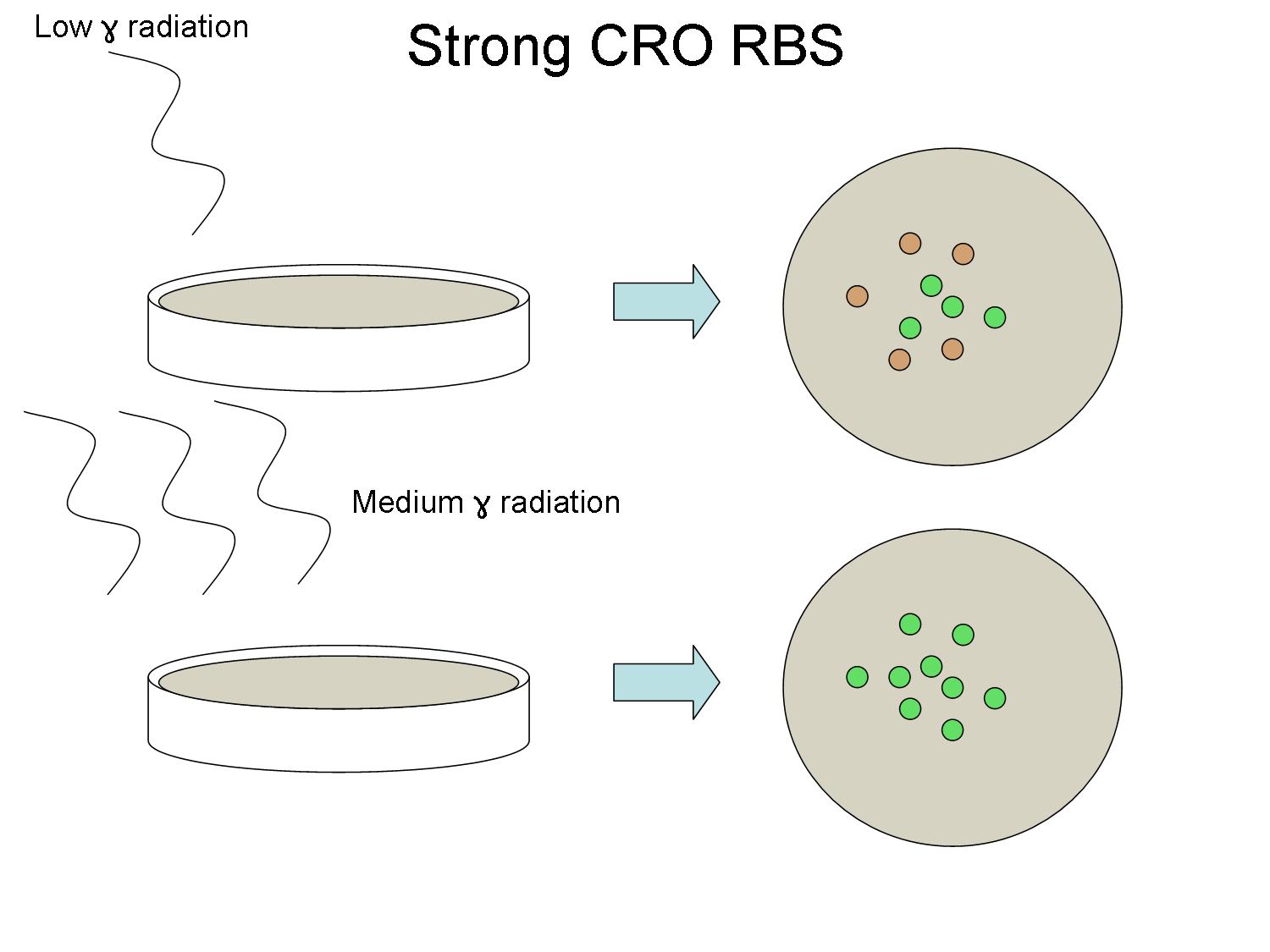PennState/Project/Dosimeter/Dosimetry
From 2007.igem.org
Mnmarshall (Talk | contribs) |
|||
| Line 1: | Line 1: | ||
'''Fine Tuning'''<br> | '''Fine Tuning'''<br> | ||
| - | The phage origins of the bio-dosimeter means that it is an all or nothing response on a cellular level. While this makes the dosimeter easy to use and interpret, it increases the challenge to set it up as a practical way to monitor ionizing radiation. The threshold at which the dosimeter triggers can be modified by testing various RBS sites in front of both cl and cro genes to change the rate of expression from the promoter. While changing the RBS strength will not have an | + | The phage origins of the bio-dosimeter means that it is an all or nothing response on a cellular level. While this makes the dosimeter easy to use and interpret, it increases the challenge to set it up as a practical way to monitor ionizing radiation. The threshold at which the dosimeter triggers can be modified by testing various RBS sites in front of both cl and cro genes to change the rate of expression from the promoter. While changing the RBS strength will not have an effect on the maximum concentration of either protein as they are carefully regulated by the promoter, it will play a large role when the host's RecA protease from the SOS response begins cleaving Cl. Here the replacement rate of the two proteins will determine whether the on or off state is the end result of irradiation. |
{| border="0" cellspacing="8px" cellpadding="15" width="100%" | {| border="0" cellspacing="8px" cellpadding="15" width="100%" | ||
Latest revision as of 03:24, 27 October 2007
Fine Tuning
The phage origins of the bio-dosimeter means that it is an all or nothing response on a cellular level. While this makes the dosimeter easy to use and interpret, it increases the challenge to set it up as a practical way to monitor ionizing radiation. The threshold at which the dosimeter triggers can be modified by testing various RBS sites in front of both cl and cro genes to change the rate of expression from the promoter. While changing the RBS strength will not have an effect on the maximum concentration of either protein as they are carefully regulated by the promoter, it will play a large role when the host's RecA protease from the SOS response begins cleaving Cl. Here the replacement rate of the two proteins will determine whether the on or off state is the end result of irradiation.

